

It’s that time of year, we all want to get outside and enjoy the wonderful weather.
So….what’s the magic routine you need to get your lovely Vitamin D + protect your skin too?
Living in Iowa this year we had a terribly long winter and I found this also showed in many of my patient’s Vitamin D levels being the lowest I’ve seen in years. Typically, the sun would show it’s face in March, but…this year in early May it was still cold here! I continue to see patients who weren’t taking their Vitamin D through this long winter experience Seasonal Affective Disorder (SAD). They feel low, depressed, moody and easily became ill d/t their low levels.
Let’s break down why Vitamin D is soooo important. Vitamin D is mentioned in many chapters of my book, Your Longevity Blueprint.
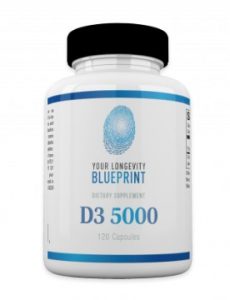
However, it also supports other body systems, including cardiovascular and blood sugar balance as well as can increase musculoskeletal strength, neurological and immune function and enables targeting of over 200 different genes throughout the body.
Vitamin D deficiency has reached epidemic proportions around the world, making the achievement of optimal levels extremely important to overall health.
Having low vitamin D can lead to many chronic diseases like depression, autoimmune diseases, cardiovascular disease, diabetes, and even cancer. The best way to know if you are vitamin D deficient is having your levels tested before supplementing, and then being retested after supplementing to confirm that your levels have improved. I want my patient’s levels greater than 80. Many have been in the teens (way too low this year in May). When I find this low of levels in my patients, 1000 IU isn’t going to help much, and typically that’s all that’s in a multivitamin. Even taking 5000 IU D3/day, it can take months for levels to improve. I often put my patients this low on 50,000 IU D3 2-3 times/week for one bottle (15 doses) to quickly improve levels, then I recheck the and reduce the dose unless they are getting plenty of sun. If so, they may be able to take a break from supplementing short term until it becomes cloudy again and then 5000 IU D3 is often a great maintenance daily dose. (If you are prone to kidney stones, be cautious with high dose Vitamin D3 use and consider also taking K2 and magnesium with it).
Living in Iowa… not so close to the equator where at least ½ the year we don’t receive much sun, we need to supplement.
What’s the sun/Vitamin D connection anyways?
Let me explain.
The body makes vitamin D by converting vitamin D2 to D3, or cholecalciferol, when exposed to sunlight. You need to be in the sun for at least 10 minutes mid-day (high sun) for this conversion to happen *without sunscreen on. Also you need to have a large amount of your skin surface exposed. It is estimated that fair skinned individuals will get 10,000 IU D3 daily this way. If you have darker skin it will take longer. Exposing just your face or wrists isn’t enough. I actually have some patients who will sunbath nude in the privacy of their backyard for 10 minutes!
However, you also don’t want to get skin cancer right? Did you know it’s the most common cancer outnumbering all others?
So, should you use sunscreen? Debate exists here. If you are outside for long periods of time, I think the answer is YES!
Some individuals state this research doesn’t actually exist… but I have seen studies that show using SPF >15 can reduce your chance of developing skin cancer and premature aging. This is because the sun’s ultraviolet (UV) light damages the skin’s cellular DNA, creating genetic mutations that can lead to skin cancer. IF you wear sunscreen, make sure it doesn’t contain cancer causing chemicals!
I’m very thankful for organizations like the Environmental Working Group (EWG) who have created guides like their sunscreen guide on an annual basis free for consumers. Last year’s tips included recommendations to avoid sunscreens with Vitamin A or retinyl palmate which is added to many sport sunscreens and moisturizers because it may trigger development of skin tumors and lesions when used on skin in the presence of sunlight. The EWG also states, “SPF stands for sun protection factor, but that term refers only to protection against UVB rays that burn the skin. It has little to do with a product’s ability to protect skin from UVA rays, which penetrate deep into the body, accelerate skin aging, may suppress the immune system and may cause skin cancer. High-SPF products tempt people to apply too little sunscreen and stay in the sun too long. The FDA has proposed prohibiting the sale of sunscreens with SPF values greater than 50+.” This means the higher the SPF isn’t necessarily better. I typically use SPF of 30.
Additionally, watch for ingredients like oxybenzone. This obviously penetrates the skin, gets into the bloodstream and can act like estrogen in the body increasing risks for diseases like endometriosis. It has also been shown to cause lower birth weights in newborn girls. Avoid oxybenzone!
So, to summarize my recommendations:
- Get your Vitamin D levels tested.
- Supplement if needed and have levels retested to confirm you aren’t too low or too high.
- Get outside without sunscreen for 10-20 minutes mid day to get your Vitamin D.
- Then apply your safe sunscreen for more prolonged periods of sun exposure.
- Avoid high SPF, Vitamin A and oxybenzone.
Now….how do you select the best sunscreen for your family? The best and worst sunscreens can be found here.
Personally, I’m a huge fan of Beautycounter. This year they launched a spray product in their mineral, antioxidant rich sunscreen-protective against *both UBA, UVB, and blue light rays. This is a non-aerosol option which makes it safe for our planet! Many other spray options should be avoided due to inhalation risks. You can click here to order and learn more about their sunscreen products. Check out some of my favorites below:
Beautycounter’s Protect all over Sunscreen
Beautycounter’s Sunscreen Stick
Beautycounter’s Countersun Mineral Sunscreen Mist *new*
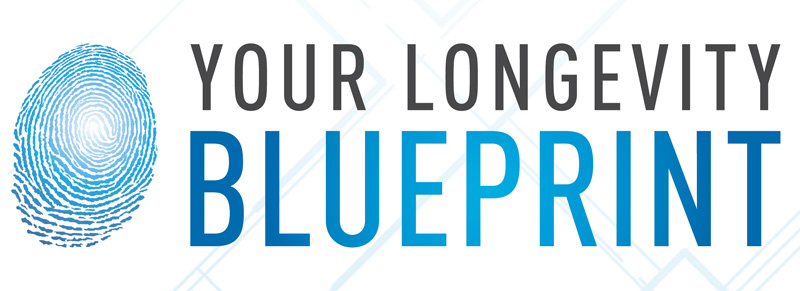
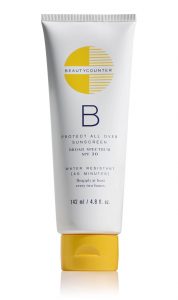
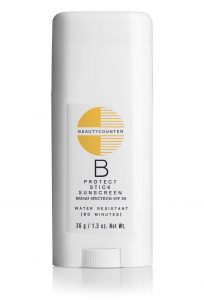
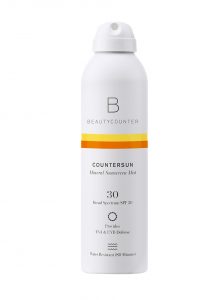
10399 Comments. Leave new